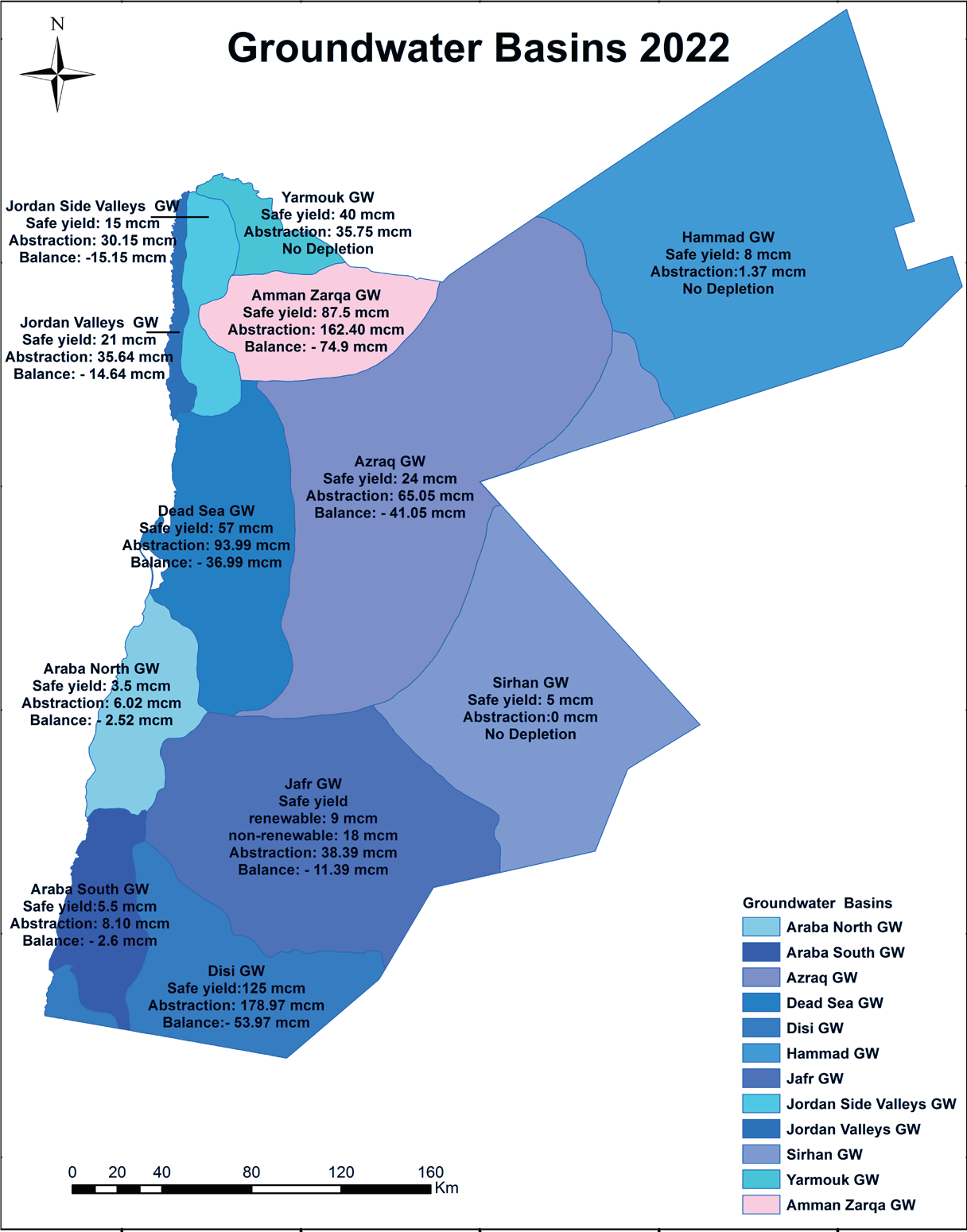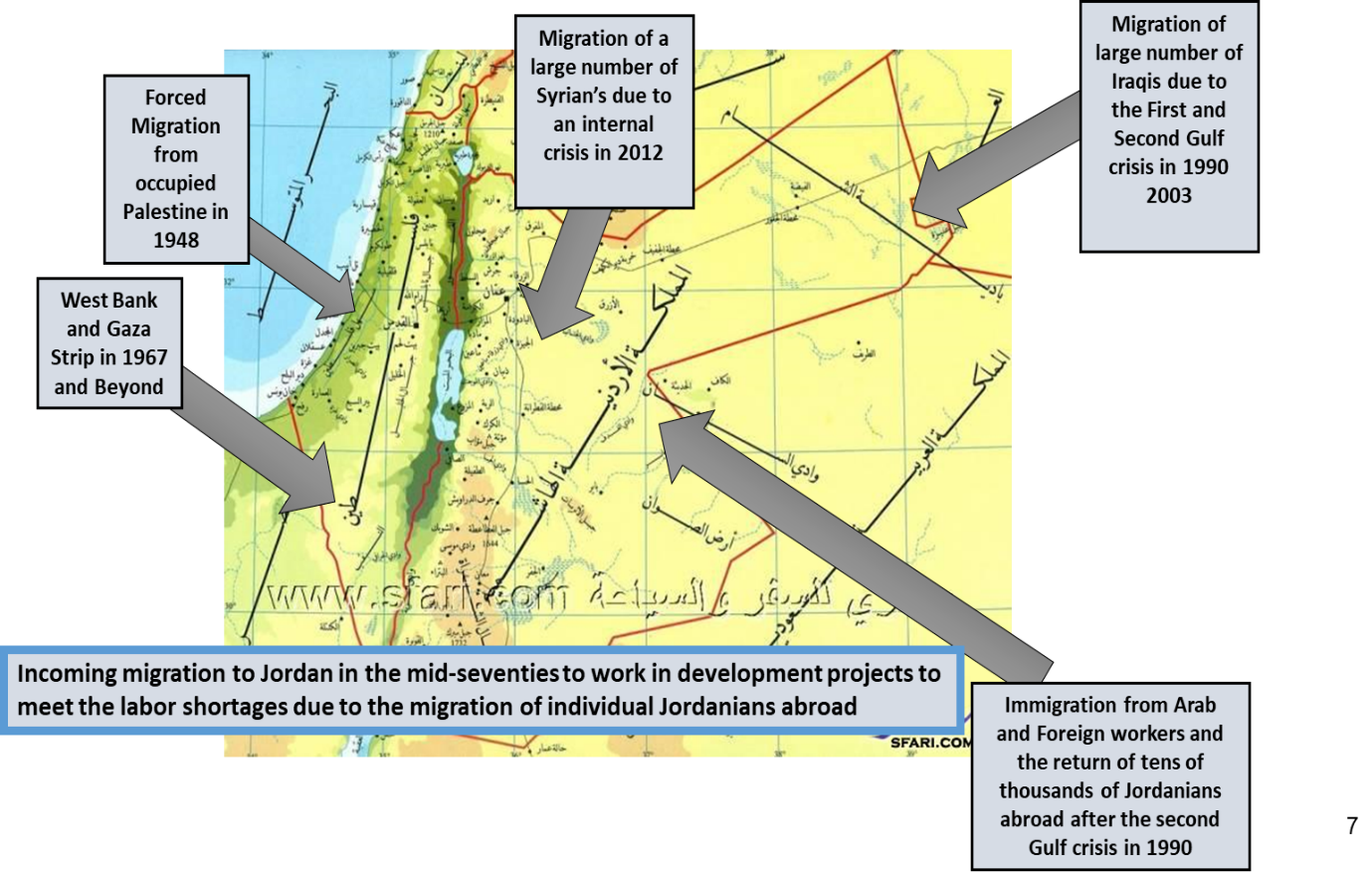Listen here on Spotify | Listen here on Apple Podcast
Episode released on October 31, 2024
Episode recorded on July 19, 2024
 Maysoon Al-Zoubi is Project Manager for a Food and Agricultural Organization (FAO) Green Climate Fund with $33 million to improve water use in agriculture in Jordan. She served as the Secretary General of the Jordan Ministry of Water and Irrigation from 2009 to 2012, Senior Policy Analyst, Economic Affairs Department, 2007 to 2009, and seconded to Prime Minister of Jordan as Senior Infrastructure Specialist in 2005 through 2007.
Maysoon Al-Zoubi is Project Manager for a Food and Agricultural Organization (FAO) Green Climate Fund with $33 million to improve water use in agriculture in Jordan. She served as the Secretary General of the Jordan Ministry of Water and Irrigation from 2009 to 2012, Senior Policy Analyst, Economic Affairs Department, 2007 to 2009, and seconded to Prime Minister of Jordan as Senior Infrastructure Specialist in 2005 through 2007.
Highlights | Transcript
Background on Jordan: formally titled the Hashemite Kingdom of Jordan, was recently downgraded from an upper to lower middle income country by the World Bank, attributed to the 9% increase in population, with large influx of refugees.
Jordan (96,000 km2) is surrounded by regional conflict with Syria to the north, Iraq to the east, Saudi Arabia to the south and east, and Israel and the occupied West Bank to the west.
Jordan is subdivided into three main geographic and climate area:
- Jordan Valley, part of the great Rift Valley of Africa, Mediterranean climate with wet winters
- Mountain Heights Plateau
- Eastern Desert (Badia region, Arabian desert), 75% of Jordan
Water scarcity: 97 m3 per capita per year, below absolute water scarcity threshold of 500 m3/capita/yr (World Bank)
40% of water in Jordan is obtained from transboundary basins, downstream of these countries
Jordan River and Yarmouk River (tributary of Jordan) have very low flows. Reservoirs were at 32% of design capacity at end of 2022, 2020 – 2022 were dry years (Jordan Water Sector Facts and Figures 2022).
Most water in Jordan is derived from aquifers that are overexploited. The 2022 Water Sector Facts and Figures reported 1,123 mcm (million cubic meters, total water use), 58% from groundwater, 26% from surface water, and 16% from treated wastewater.
Of the total 1,127 mcm (1.1 km3) of water use in Jordan in 2022, 51% was for agriculture, 46% for municipal, and 3% for industrial sectors. Of the 51% used for agriculture, 40% is sourced from wastewater reuse.
Water is expensive in Jordan, ~ 3 USD/m3
Population of Jordan: 11.3 million (2022), 2.2 million registered Palestinian refugees and 1.4 million Syrian refugees after the 2011 civil war. Only two camps, Azrac (40,000) and Zataari (80,000) refugee camps, most refugees live outside camps (UNHCR). The camps are located in the north.
Jordan subjected to climate extremes, floods and droughts. A total of 22 Jordanian students were killed in floods in 2018 and 10 Israeli students in another flood in 2018 near the Dead Sea, the lowest point on Earth (~ 140 m below sea level).
Water resource projections are poor due to rising temperatures, increasing evaporation, rapidly increasing population related to influx of refugees raising water demand, and changing seasonal rainfall, becoming drier in winter.
Jordan Water Model: coupled human-natural-engineered systems model to assess Jordan’s freshwater security under climate and socioeconomic changes. Model simulates per capita water availability declines by 50% by 2100 to < 40 L/capita/day. Portfolio of solutions suggested: large-scale desalination, coordination of supply and demand measures (Yoon et al., PNAS, 2021).
Climate Adaptation and Climate Finance projects for Jordan through the Global Environment Facility.
Green Climate Fund through the Food and Agricultural Organization (FAO) (~ $33 million) with the goal of improving irrigation efficiency (link).
Although most Jordanians (96%) are connected to a piped water supply, water is rationed with ~50% of population receiving water only 1 day/week (link).
Integrated water resource management policy (IWRM) is practiced in Jordan.
Conventional water sources, groundwater and surface water
Non-conventional water sources: wastewater reuse, desalination
Syrian refugees increased water demand by 20%.
Wastewater (WW) reuse: treated WW cannot be used directly for drinking because of religious issues in Arab world, used for agriculture, non-restricted Class A agriculture, provided directly from WW treatment plants to farms. Also used for industrial purposes (e.g., potash production).
Proposed Solutions to Water Shortages:
Expansion of the As-Samra wastewater treatment plant: cost $98 million, constructed in 2008 with support from USAID, treating ww from Amman and Zarqa governorates. 133 mcm treated WW for irrigation in Jordan Valley, biosolids for potential reuse as fertilizers, 80% of its energy from biogas.
Managed Aquifer Recharge (MAR): mapping where MAR is appropriate (Salameh et al., Water, 2021).
Rainwater harvesting: building codes requiring houses to have roof tanks where rainwater exceeds 200 mm/yr. More than 8000 households. (Al-Qawasmi, 2021, Appl. Water Science)
Water saving devices: modified showers (reduced pressure) and toilets (dual flush) to reduce water consumption. Regulation for gray water reuse for mosques. Dead Sea spas and hotels reusing gray water, not black water.
Wastewater: used to have 75% connection but is less now with refugees.
Hotels are using gray water up to 3×.
Training women: Water Wise Woman, train them to be plumbers, ambassadors to people in rural areas. (Jordan: Water Wise Plumbers)
Training climate wise woman in current green climate fund FAO project, climate resilience, agricultural practices.
Farmer Field Schools (FFS) in Jordan: working with farmers to select appropriate irrigation technology, ~ 150 established, trained ~2000 farmers, 20% women, FAO and UN, since 2018 (link).
Vocational schools: climate smart agriculture curriculum.
Training youth, median age of people in Jordan, 22 years. Youth fellows.
Reclaimed wastewater storage, low demand in winter because of limited agriculture, developing storage systems so it can be used in the following season.
Surface reservoirs (13), soil dams for water harvesting, create ponds
Considering underground groundwater dams, learning from the Turks (Aras et al., Groundwater, 2024).
Farmers are installing drip irrigation to conserve water. Decreased water use for irrigation from 72% to ~50%.
Non-revenue water: ~50% of water use, people drilling wells and selling water using tankers (USAID Non-Revenue Water).
Deep aquifers:
Shidiyeh-Hassa Water Conveyance Project, 20 mcm from deep aquifers in South, 20 wells, water treated, lined to National Water Carrier project (completed in 2017, 600 km pipeline), 2nd phase 50 mcm (Namrouka, Jordan Times, Feb 19, 2019).
Disi Water Conveyance Project: 100 mcm from Disi Aquifer (deep aquifer at border of Jordan and Saudi Arabai) in South piped to Amman, completed in 2013, cost: $1.1 billion (link)
Red Sea to Dead Sea solution (Namrouka, Jordan Times, 2017):
Related to Peace Treaty. Plan to desalinate seawater in the Red Sea and transport to the capital, Amman, in the North passing Dead Sea and discharge concentrate in Dead Sea to help recovery of Dead Sea (declining ~ 1 m/yr, 30% depletion over past 3 decades). Working with Montgomery and Watson. Cost of desalination and transport. Pipe from Aqaba on Red Sea to Amman, capital in North. Five cities from airport in Aqaba, improve economy, tax to support project. Proposition failed with ministerial change.
National Water Carrier: Aqaba-Amman Water Desalination and Conveyance Project, 300 mcm desalinated water, commencing in 2029 (JT, Jordan Times, Jan. 2024). No saving of the Dead Sea. French Company.
Green Blue Prosperity: Memorandum of Understanding, conduct pilot study. UAE: solar field in Jordan desert, 600 MW, transfer to Israel in exchange for 200 mcm of desalinated seawater from Israel to Jordan (link). Maysoon suggests it would be better to keep energy in Jordan and desalinate water in Jordan rather than relying on other countries because of security concerns.
Blue Peace Middle East (since 2019): use water to build peace. Train next generation.
Two pillars:
Dialog, sit together with people to gain trust
Policy: youth fellowship, training in international water law
Six countries: Jordan, Lebanon, Iraq, Turkey and Syria and Iran as observers. Focus on media.













